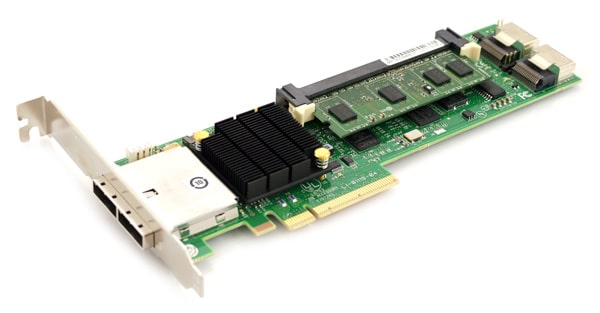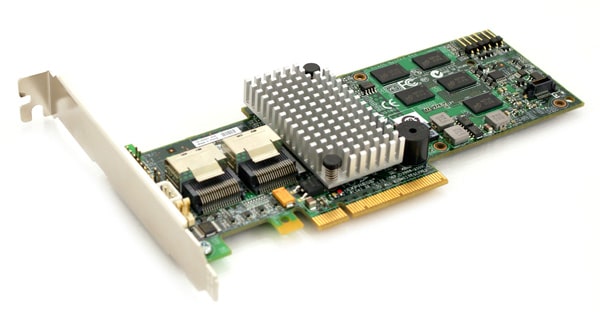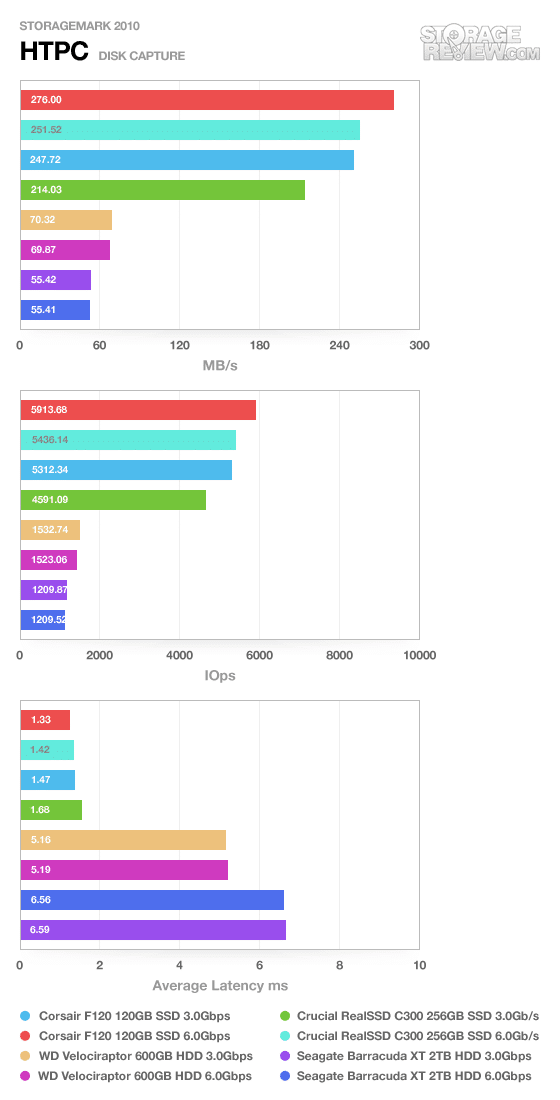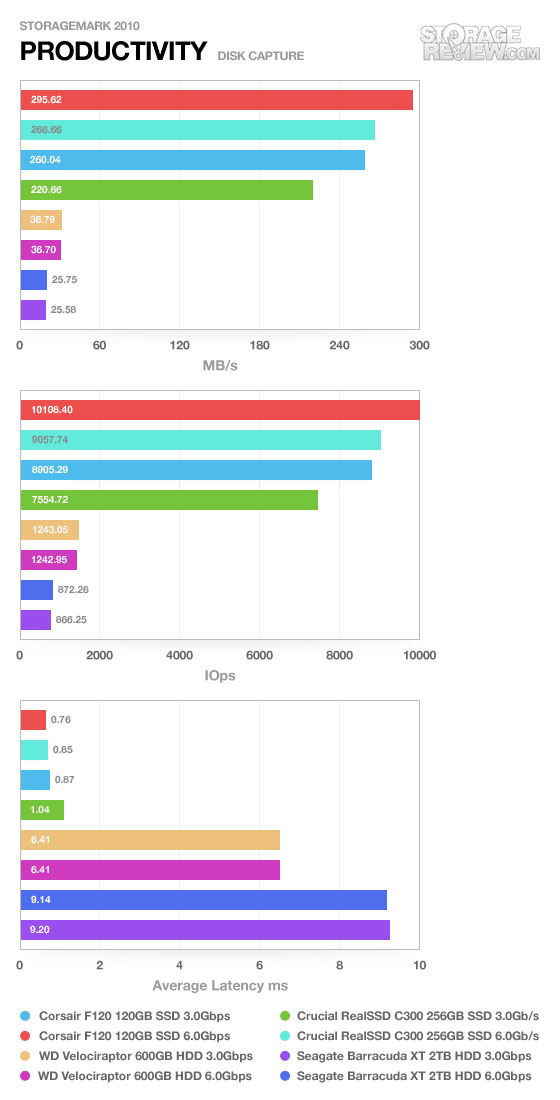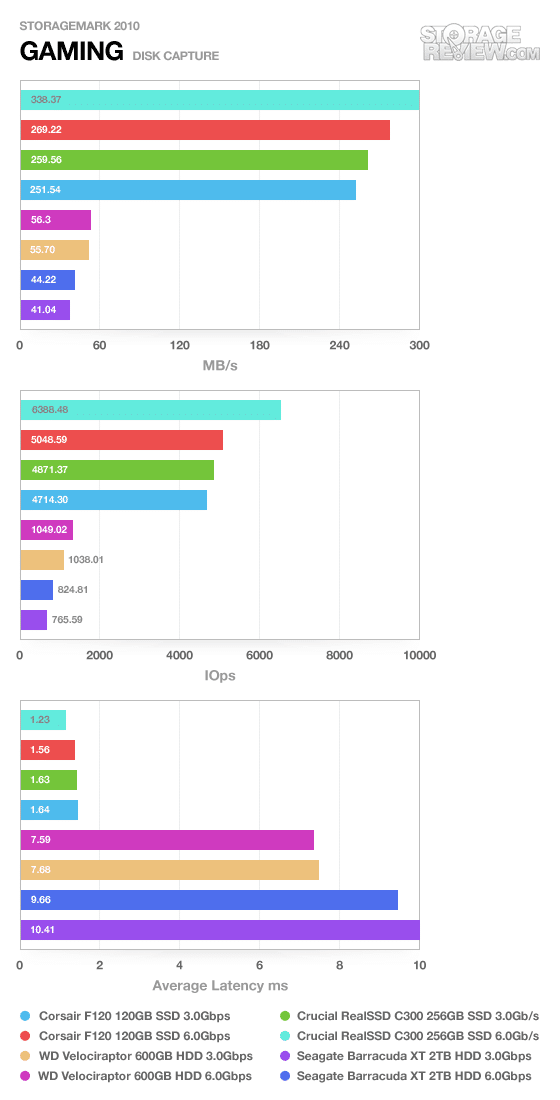
Right now the storage market is starting to slowly shift away from SATA II interfaces, limited to 3.0Gbps, to the newer and faster SATA III connection which supports speeds twice that of SATA II. This is happening with both hard drives and SSDs alike, with the latter actually saturating SATA 3.0Gbps connections with the latest generation of drives on the market. As users look to increase performance and stay up to date, one question on some people’s mind is if they should cough up the cash for a newer and faster RAID card. In the first of two articles on the 8888ELP and 9260-8i MegaRAID cards from LSI, we look at how standard consumer drives interact with both interfaces in our real-world StorageMark 2010 traces.
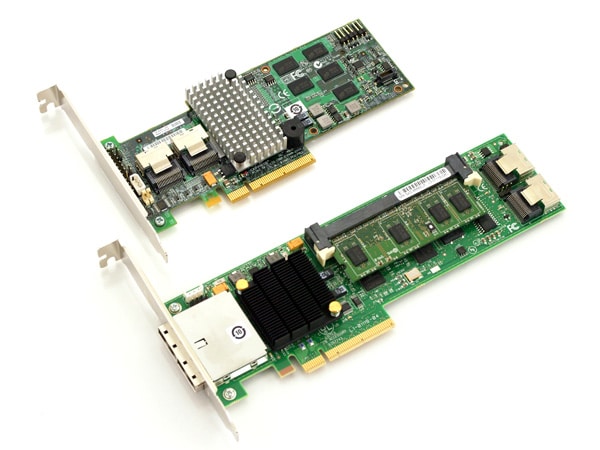
LSI MegaRAID 8888ELP Quick Specifications:
- 3Gb/s throughput per port
- LSI SAS1078 RAID on Chip (ROC)
- 500MHz PowerPC
- 512MB DDRII Cache (667MHz)
- RAID levels 0, 1, 5 and 6
- RAID spans 10, 50 and 60
LSI MegaRAID 9260-8i Quick Specifications:
- 6Gb/s throughput per port
- LSI SAS2108 RAID-on-Chip (ROC)
- 800MHz PowerPC
- 512MB DDRII cache (800MHz)
- RAID levels 0, 1, 5 and 6
- RAID spans 10, 50 and 60
Background
For the better part of a year, one of the long-term projects here at StorageReview is testing two LSI RAID cards with drives that have come in for review. These cards include the formidable MegaRAID SAS 8888ELP and the MegaRAID SAS 9260-8i. From the start, the main question on our minds was how much the interface speed affected overall drive performance. Both of these cards offer the best possible conditions for drives connected—tons of onboard cache, dedicated processor for the controller, and hardware RAID options—with the main difference between both of them being their connection speed.
The tried and true 8888ELP supports SAS and SATA connections at 3.0Gbps while the newer 9260-8i negotiates speeds at 6.0Gbps for those drives which support it. As some have realized over the past year, many new drives are supporting the faster SATA III 6.0Gbps interface, but few actually need it. None of the hard drives we have reviewed to date come close to saturating SATA II 3.0Gbps… so is a faster connection worth it?
When testing drives that support SATA 6.0 speeds, as readers of StorageReview.com have noticed, we compare Intel 3.0Gbps with LSI RAID 6.0Gbps, since onboard 6.0Gbps hasn’t been an option yet for us. A downside to this method is not all drives are tested equally, but it’s what we had on hand to test with. This article will hopefully clear some of this up, pitting RAID card against RAID card, with the connection speed being the only difference. Part one of this review will include the following four drives:
- Corsair Force F120 120GB SSD (3.0Gbps)
- Western Digital 600GB Velociraptor (6.0Gbps)
- Crucial 256GB RealSSD C300 SSD (6.0Gbps)
- Seagate 2TB Barracuda XT (6.0Gbps)
All drives are tested in single-drive RAID0 mode, with write-back enabled, drive cache enabled, and stripe size set to 128k. We will be limiting the first part of this review to consumer drives tested using our real-world benchmarks only. Part of the reasoning behind this is we have gone very in-depth with these drives already in part reviews. In part two, we will be including a full lineup of IOMeter and StorageMark traces testing three Seagate Savvio 10k.4 drives in single mode, RAID0, RAID1, and RAID5 at both 3.0 and 6.0Gbps connection speeds.
Real-World Benchmarks
Our custom StorageMark 2010 traces break down drive performance by scenario, which aim to mimic common everyday situations. We target three unique usage scenarios, each with different read/write structures. These include an HTPC trace, a productivity trace, and our gaming trace.
The first real-life test is our HTPC scenario. In this test we include: playing one 720P HD movie in Media Player Classic, one 480P SD movie playing in VLC, three movies downloading simultaneously through iTunes, and one 1080i HDTV stream being recorded through Windows Media Center over a 15 minute period. Higher IOps and MB/s rates with lower latency times are preferred. In this trace we recorded 2,986MB being written to the drive and 1,924MB being read.
It’s clear the winner in this particular StorageMark trace is the Corsair Force F120 SSD. Even with the SATA 3.0 internal limitation, it managed a surprising 276MB/s average connection speed over the 6.0Gbps RAID card. This is a solid 29MB/s bump over its speed when connected over the SATA 3.0 RAID card. The Crucial RealSSD C300 with a native SATA 6.0 internal interface only managed 251MB/s over SATA 6.0 versus 214MB/s over SATA 3.0Gb/s.
The hard drives in this group both saw very little gain (if any) from the improvements of going to the faster connection speed. The main conclusion you can draw from this test, is if you are an owner of the C300, make sure is connected to a SATA III interface to get its peak performance. It’s also worth noting that just using a RAID card makes a substantial difference. While we didn’t graph the numbers on the charts in this review for space reasons, the C300 connected to the Intel SATA II interface only managed 139MB/s. So just going to a RAID card made a huge difference for single drive performance.
Our second real-life test covers disk activity in a productivity scenario. For all intents and purposes this test shows drive performance under normal daily activity for most users. This test includes: a three hour period operating in an office productivity environment with 32-bit Vista running Outlook 2007 connected to an Exchange server, web browsing using Chrome and IE8, editing files within Office 2007, viewing PDFs in Adobe Reader, and an hour of local music playback with two hours of additional online music via Pandora. In this trace we recorded 4,830MB being written to the drive and 2,758MB being read.
The Corsair Force F120 still topped the charts in the productivity trace, this time with an astounding 295MB/s average transfer speed over SATA 6.0Gbps. This compares to ‘only’ 260MB/s over SATA 3.0Gbps. The Crucial RealSSD C300 still saw a substantial boost transitioning from SATA 3.0 to 6.0Gbps, measuring 220MB/s versus 260MB/s respectively. The hard drives still performed identically in this trace, showing no real improvements even with the faster connection.
Our third real-life test covers disk activity in a gaming environment. Unlike the HTPC or Productivity trace, this one relies heavily on the read performance of a drive. To give a simple breakdown of read/write percentages, the HTPC test is 64% write, 36% read, the Productivity test is 59% write and 41% read, while the gaming trace is 6% write and 94% read. The test consists of a Windows 7 Ultimate 64-bit system pre-configured with Steam, with Grand Theft Auto 4, Left 4 Dead 2, and Mass Effect 2 already downloaded and installed. The trace captures the heavy read activity of each game loading from the start, as well as textures as the game progresses. In this trace we recorded 426MB being written to the drive and 7,235MB being read.
In the third and final trace the Crucial RealSSD C300 finally showed the F120 whose boss. The C300 has a clear advantage when it comes to all-out read performance (which this trace is heavily comprised of). With a transfer speed of 338MB/s on the SATA + SAS 6.0Gbps RAID card compared to just 259MB/s on the slower model, it’s a no-brainer for people to upgrade if they haven’t already. Now compare both of those scores to just using onboard Intel AHCI SATA II, which got 243MB/s and its pretty clear a RAID card is the best way to go.
The Corsair Force F120 managed a still-impressive score of 269MB/s over SATA 6.0Gbps compared to 251MB/s over SATA 3.0Gbps. We also saw some small changes in the performance numbers on the hard drives as well. The Western Digital Velociraptor saw an increase of just under 1MB/s between interfaces, and the Seagate Barracuda XT picked up 3MB/s. While those were measurable gains, it still probably woulnd’t be cost effective to upgrade cards for hard drives alone.
Part One Conclusion
In the consumer market it is very easy to make the conclusion that buying a faster RAID card that supports SATA + SAS 6.0Gbps speeds is completely worth it… under certain conditions. If you are hoping to find an incredible speed boost for even a 10K RPM hard drive, you won’t really find much. This is because unlike flash-based storage, magnetic storage hasn’t been able to come close in saturating the current SATA 3.0Gbps interface.
Now for those of you lucky enough to own the latest generation SSDs, stepping up to a RAID card shows significant gains, even if you are making the jump from onboard SATA II to RAID SATA II. In every single trace we performed, SSDs saw a healthy speed boost moving up from slower 3.0 to 6.0Gbps connections. This was the case with the Corsair Force F120 with peaked at 260MB/s with the 8888ELP, but spiked to 295MB/s on the faster 9260-8i. The Crucial RealSSD C300 also showed impressive results, with the biggest jump in the Gaming trace, where there was an 80MB/s (30%) difference between interfaces.
Overall if you are the computer shopper who might spend $2,000 or more on a system, getting a starter 6.0Gbps RAID card like the LSI MegaRAID 9260-4i priced at $329 makes sense. Compared to the total system cost, it drastically boosts the speed of system storage, and costs about the same as a single SSD or graphics card. If you are on the fence about upgrading from an older 3.0Gbps RAID card and still using HDDs, stay tuned for part two of this review.
LSI MegaRAID 9260-8i Product Page
LSI MegaRAID 8888ELP Product Page

